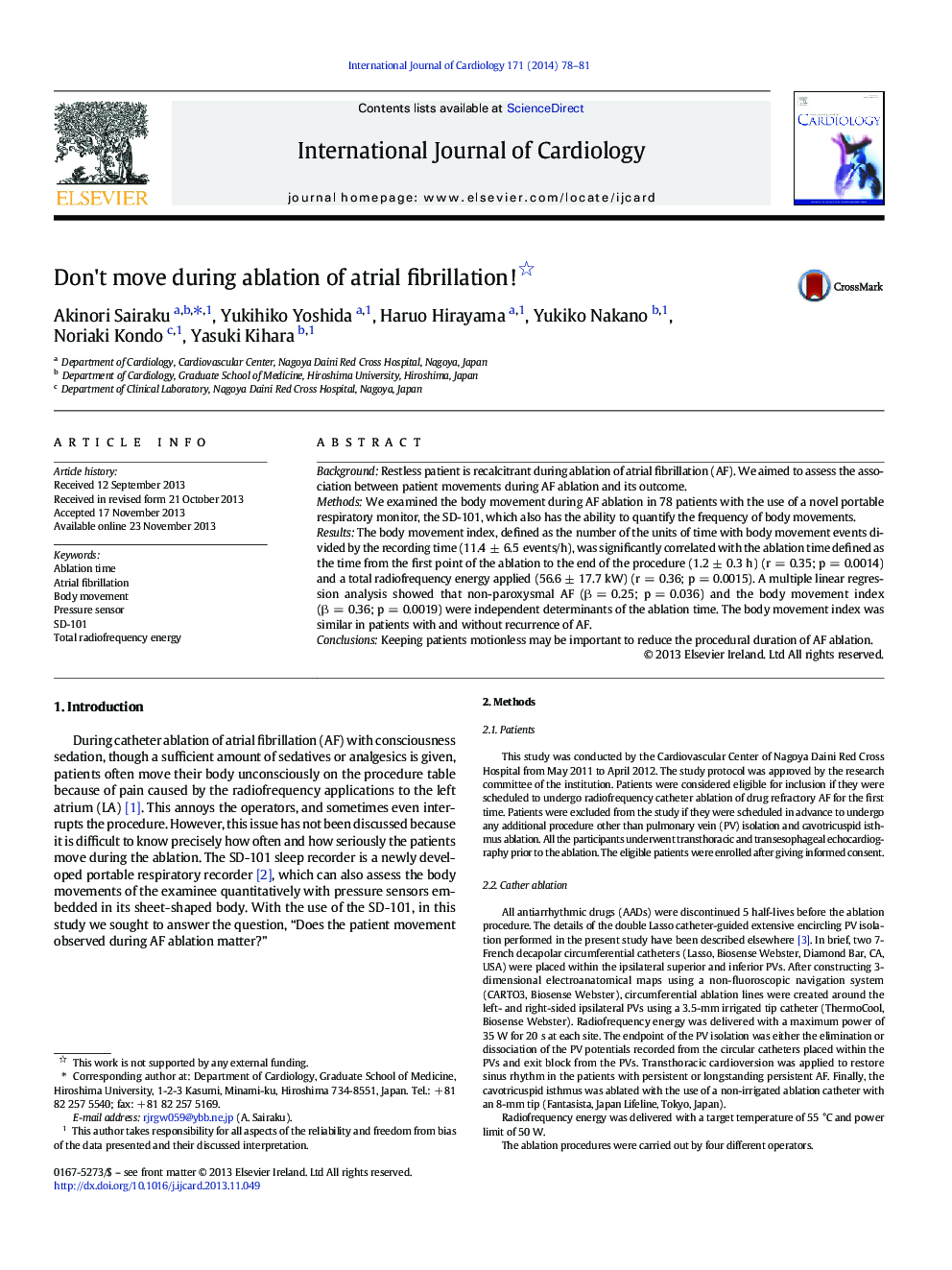| Article ID | Journal | Published Year | Pages | File Type |
|---|---|---|---|---|
| 5972723 | International Journal of Cardiology | 2014 | 4 Pages |
BackgroundRestless patient is recalcitrant during ablation of atrial fibrillation (AF). We aimed to assess the association between patient movements during AF ablation and its outcome.MethodsWe examined the body movement during AF ablation in 78 patients with the use of a novel portable respiratory monitor, the SD-101, which also has the ability to quantify the frequency of body movements.ResultsThe body movement index, defined as the number of the units of time with body movement events divided by the recording time (11.4 ± 6.5 events/h), was significantly correlated with the ablation time defined as the time from the first point of the ablation to the end of the procedure (1.2 ± 0.3 h) (r = 0.35; p = 0.0014) and a total radiofrequency energy applied (56.6 ± 17.7 kW) (r = 0.36; p = 0.0015). A multiple linear regression analysis showed that non-paroxysmal AF (β = 0.25; p = 0.036) and the body movement index (β = 0.36; p = 0.0019) were independent determinants of the ablation time. The body movement index was similar in patients with and without recurrence of AF.ConclusionsKeeping patients motionless may be important to reduce the procedural duration of AF ablation.
